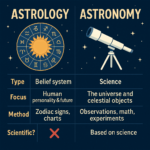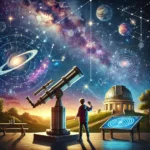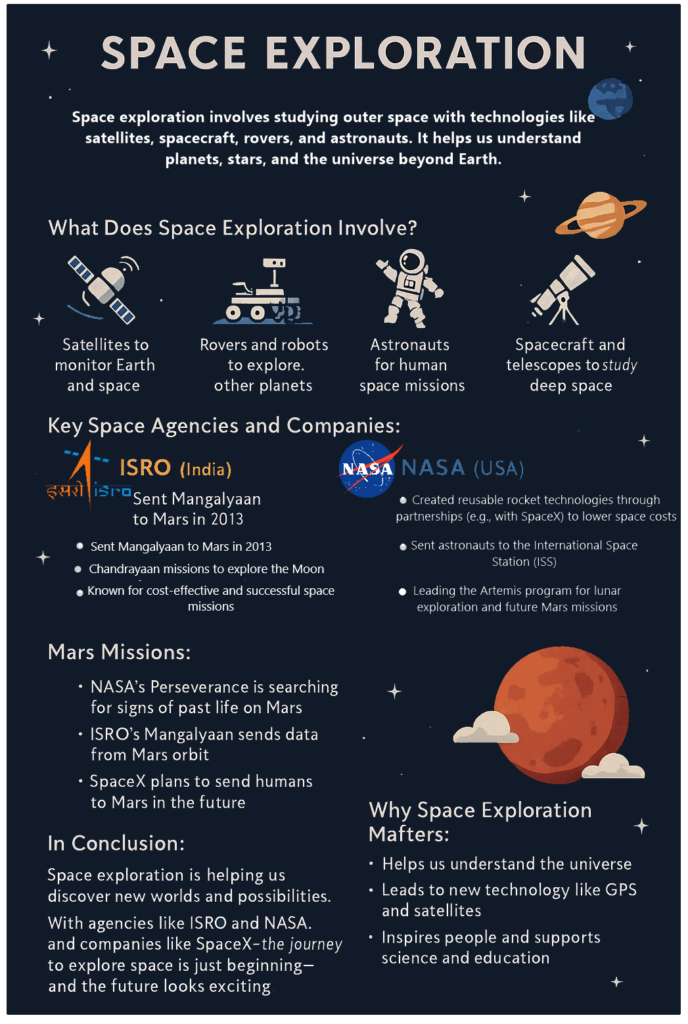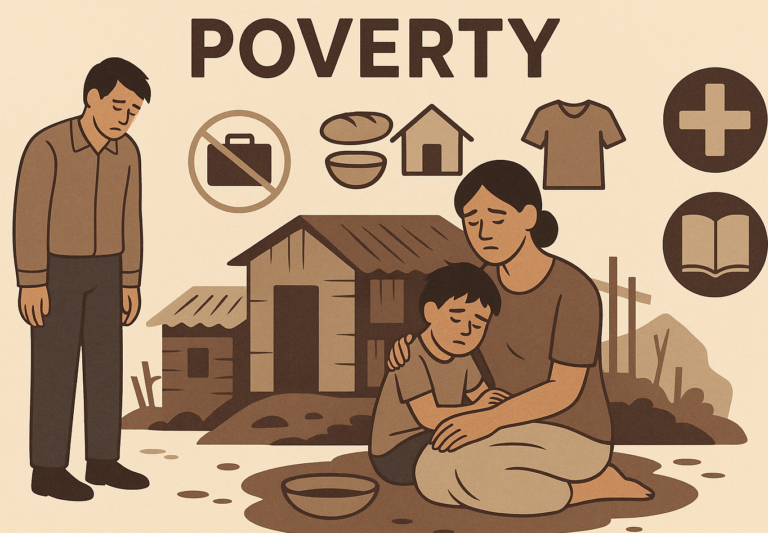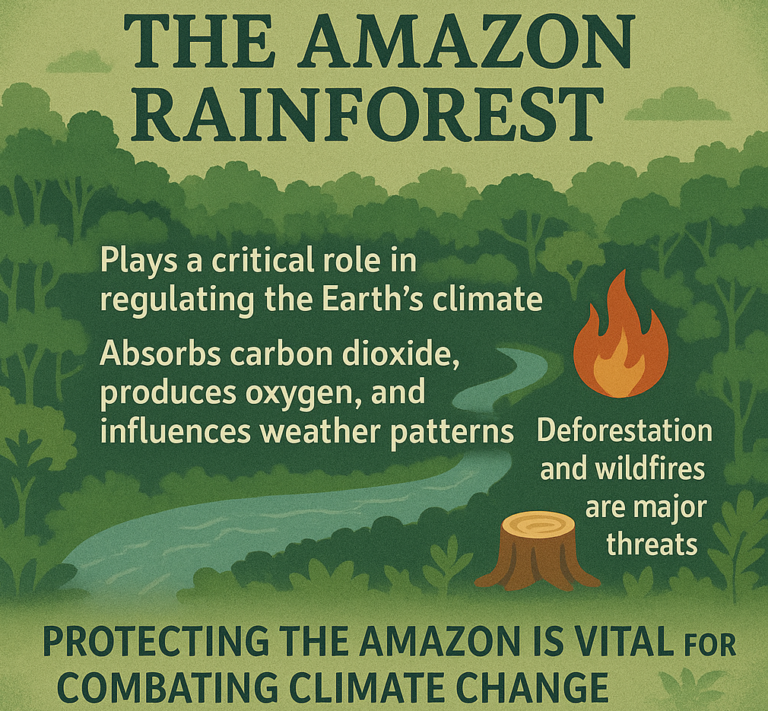Our Solar System is like a giant family, with the Sun at the center and everything else (planets, moons, asteroids, comets) revolving around it. Let’s break it down to understand how everything works
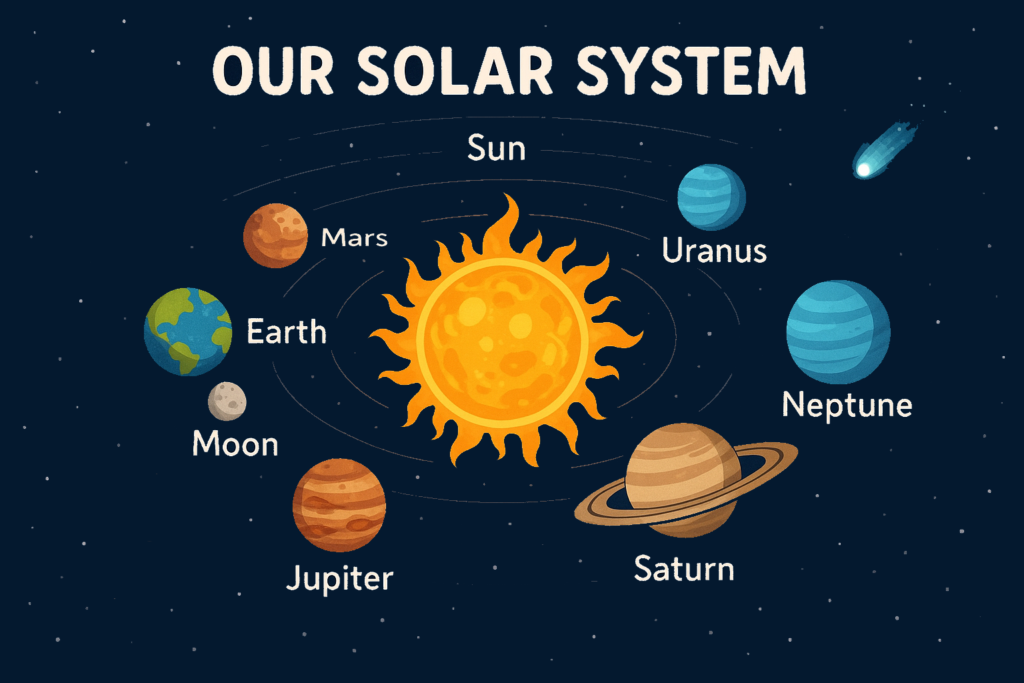
What is the Solar System?
The Solar System is a collection of celestial bodies that includes:
- The Sun (the star at the center)
- Eight planets
- Their moons
- Asteroids
- Comets
- Other space objects
All of these objects are held together by the Sun’s gravitational pull.
The Sun – The Heart of the Solar System
- What it is: The Sun is a giant ball of hot gases, mostly hydrogen and helium. It provides light and heat, which is why we have day and night and why life can exist on Earth.
- Fun Fact: The Sun is so big that it makes up about 99.8% of the mass of the entire Solar System!
The Eight Planets
There are eight planets that orbit (go around) the Sun. These planets are divided into two main groups: terrestrial planets (rocky planets) and gas giants.
1. Mercury (The closest planet to the Sun)
- What it’s like: Mercury is the smallest planet and has no atmosphere, which means there are extreme temperatures – very hot during the day and freezing cold at night.
- Fun Fact: Mercury has no moons.
2. Venus (The “Earth’s twin”)
- What it’s like: Venus is similar in size to Earth but is covered by thick clouds of toxic gases, which make it incredibly hot – even hotter than Mercury.
- Fun Fact: Venus spins backward compared to most other planets, so the Sun rises in the west and sets in the east there.
3. Earth (Our Home)
- What it’s like: Earth is the only planet known to support life. It has a breathable atmosphere, liquid water, and a perfect distance from the Sun that gives it a mild temperature.
- Fun Fact: Earth has one moon, and it orbits the planet every 27 days.
4. Mars (The Red Planet)
- What it’s like: Mars is known for its red color, which comes from iron oxide (rust) on its surface. It has the largest volcano in the Solar System, called Olympus Mons, and a large canyon called Valles Marineris.
- Fun Fact: Mars has two small moons, Phobos and Deimos.
5. Jupiter (The King of Planets)
- What it’s like: Jupiter is the largest planet in the Solar System, a gas giant made mostly of hydrogen and helium. It has a huge storm called the Great Red Spot, which has been raging for hundreds of years.
- Fun Fact: Jupiter has 79 known moons, including Io, Europa, and Ganymede (Ganymede is the largest moon in the Solar System).
6. Saturn (The Ringed Giant)
- What it’s like: Saturn is famous for its beautiful rings, which are made of ice and rock. It’s a gas giant, so it doesn’t have a solid surface like Earth.
- Fun Fact: Saturn has at least 82 moons, and one of its moons, Titan, has lakes of liquid methane.
7. Uranus (The Tilted Planet)
- What it’s like: Uranus is unique because it spins on its side. It’s an ice giant made of hydrogen, helium, and icy materials. It’s a cold planet with a blue-green color due to the methane in its atmosphere.
- Fun Fact: Uranus has 27 moons, and its rotation is tilted by 98 degrees – making it look like it’s rolling around the Sun.
8. Neptune (The Windy Planet)
- What it’s like: Neptune is similar to Uranus in composition, but it’s farther from the Sun. It has strong winds and storms, including the Great Dark Spot, which is similar to Jupiter’s Great Red Spot.
- Fun Fact: Neptune has 14 known moons, and its largest moon, Triton, is the only large moon in the Solar System that orbits in the opposite direction of its planet’s rotation.
Dwarf Planets and Other Objects
- Pluto: Pluto used to be considered the ninth planet, but in 2006, it was reclassified as a dwarf planet. It’s smaller and located in the outer Solar System.
- Other Dwarf Planets: There are other dwarf planets like Eris and Haumea in the outer Solar System, past Neptune.
Moons
Many of the planets in the Solar System have moons that orbit them. For example, Earth has one moon, but Jupiter has over 79 moons! Moons can be made of rock, ice, or gas.
Asteroids and Comets
- Asteroids: These are small, rocky objects that orbit the Sun. Most are found in the Asteroid Belt between Mars and Jupiter. Some are very large, while others are tiny.
- Comets: Comets are made of ice, dust, and rocky material. They have very long, elliptical (oval) orbits that take them far from the Sun. When a comet gets close to the Sun, it heats up and releases gas and dust, forming a bright tail that we can see from Earth.
The Solar System’s Structure
- Inner Planets: The first four planets (Mercury, Venus, Earth, Mars) are called terrestrial planets. They are rocky and have solid surfaces.
- Outer Planets: The last four planets (Jupiter, Saturn, Uranus, Neptune) are called gas giants (Jupiter and Saturn) or ice giants (Uranus and Neptune). They are made mostly of gas and ice and don’t have solid surfaces like Earth.
How the Solar System Works:
- Gravitational Pull: The Sun’s gravity keeps the planets in their orbits, so they don’t fly off into space. Each planet orbits the Sun in an elliptical (oval) path.
- Distance from the Sun: The farther a planet is from the Sun, the colder and slower it is. Planets that are close to the Sun, like Mercury and Venus, are hot, while planets like Neptune and Uranus are much colder.
Conclusion:
The Solar System is a vast, fascinating place with a variety of planets, moons, and other space objects. The Sun is at the center, providing light and heat for the planets to orbit. Each planet has its own unique characteristics, from Earth’s ability to support life to Jupiter’s giant storms. Understanding the Solar System helps us learn about the universe and our place in it

